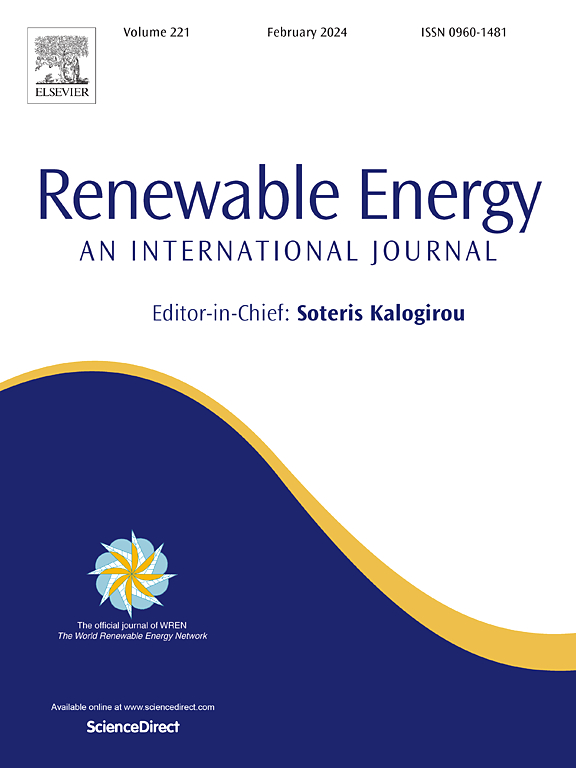Gas product behaviour using flower-like nickel-based MOF catalysts for sustainable hydrogen production from biomass
IF 9
1区 工程技术
Q1 ENERGY & FUELS
引用次数: 0
Abstract
Biomass pyrolysis offers a promising pathway for converting renewable feedstocks into hydrogen-rich syngas. However, the efficiency of this process depends heavily on the catalyst used. Nickel-based catalysts, while known for their catalytic activity and cost-effectiveness, often face challenges such as deactivation and agglomeration under pyrolysis conditions. To overcome these limitations, this study explores metal-organic frameworks (MOFs) as catalysts, with additional metal promoters to enhance Ni-based systems. Ni-MOF and Ce-Ni-MOF catalysts were synthesized and systematically evaluated, focusing on variables such as catalyst type, temperature, and catalyst-to-biomass ratio. Both catalysts exhibited highly textured, flower-like structures with loosely packed sheets, providing a large surface area for enhanced catalytic reactions. Ni-MOF increased hydrogen production by 96 % (13,785 mL/g, 53.0 vol%) within 10 min compared to non-catalytic conditions. Ce-Ni-MOF showed superior long-term performance, producing 2252 mL/g (44 vol%) of H2 and achieving 66 % and 76 % higher hydrogen yields than Ni-MOF at 20 and 30 min, respectively. Structural analysis revealed that the catalysts’ flower-like morphology remained intact after pyrolysis, with increased porosity suggesting partial evolution of the MOF structure at high temperatures. Ni-MOF exhibited an increase in nickel loading from 39.8 wt% to 59.5 wt% post-pyrolysis, which further enhanced its catalytic activity. Ce-Ni-MOF displayed a narrower particle size distribution (6–11 nm) and improved stability, with nickel loading only slightly decreasing from 20.7 wt% to 18.4 wt%, maintaining uniformity over time. Both catalysts achieved optimal catalytic activity at a 1:1 catalyst-to-biomass ratio, although Ni-MOF experienced a 61 % reduction in H2 production at a 1:4 ratio. Higher temperatures (800 °C) further enhanced hydrogen, CO, and CH4 yields for both catalysts. These findings demonstrate the potential of MOF-based nickel catalysts for advancing renewable hydrogen production, with Ce-Ni-MOF offering enhanced stability and long-term catalytic efficiency under various conditions.
求助全文
约1分钟内获得全文
求助全文
来源期刊

Renewable Energy
工程技术-能源与燃料
CiteScore
18.40
自引率
9.20%
发文量
1955
审稿时长
6.6 months
期刊介绍:
Renewable Energy journal is dedicated to advancing knowledge and disseminating insights on various topics and technologies within renewable energy systems and components. Our mission is to support researchers, engineers, economists, manufacturers, NGOs, associations, and societies in staying updated on new developments in their respective fields and applying alternative energy solutions to current practices.
As an international, multidisciplinary journal in renewable energy engineering and research, we strive to be a premier peer-reviewed platform and a trusted source of original research and reviews in the field of renewable energy. Join us in our endeavor to drive innovation and progress in sustainable energy solutions.
 求助内容:
求助内容: 应助结果提醒方式:
应助结果提醒方式:


